Yellowstone is the United States’ first national park, and in my opinion one of the finest protected areas in the world. It’s also one of the most studied: Yellowstone researchers have published important studies on everything from fire ecology to the role of large predators to the origins of life.
But many serious naturalists give the park a wide berth – they want nothing to do with the circus-like atmosphere of Old Faithful or the famous “bear jams” (when traffic stops for wildlife). Which is a pity. Yellowstone remains one of the great places in the world to see creatures large and small. But knowing where to focus your efforts can help.
Here are five places every serious naturalist should check out in the nation’s first national park. (And please share your own favorite spots as well).
-
The Lamar Valley

Bison browse in the Lamar Valley. © Zachary Morton/TNC Photo Contest 2019 The Lamar Valley has it all: thundering herds of bison, grizzly bears digging for ground squirrels, badgers and coyotes sneaking through the sagebrush, pronghorn standing alert. It’s the best place to see large, wild beasts in the “lower 48.”
And since 1995, gray wolves have been restoring the valley (and indeed, the park) to its full glory. Wolves were eradicated from the park in the early 1900s, under the mistaken belief that predators were harmful to populations of “beneficial animals.” Elk, with little to fear, began lolly-gagging in streams, pounding vegetation much like grazing livestock.
When wolves returned, elk couldn’t loiter – they had to stay on the move. This allowed aspens and other streamside vegetation to recover, which in turn drew back beavers, which in turn created favorable habitat for birds and native fish. Large predators have dramatic effects on ecology, it turns out.
And the Lamar Valley is now the place to observe wolves. Brigades of wolf watchers keep track of area wolf packs through spotting scopes, and they’re willing to share the latest with Yellowstone newbies. Even if the wolves aren’t around, there’s always something happening in Lamar: spend an afternoon there and you’ll enjoy a place where predator and prey still move to ancient rhythms
-
The Yellowstone River
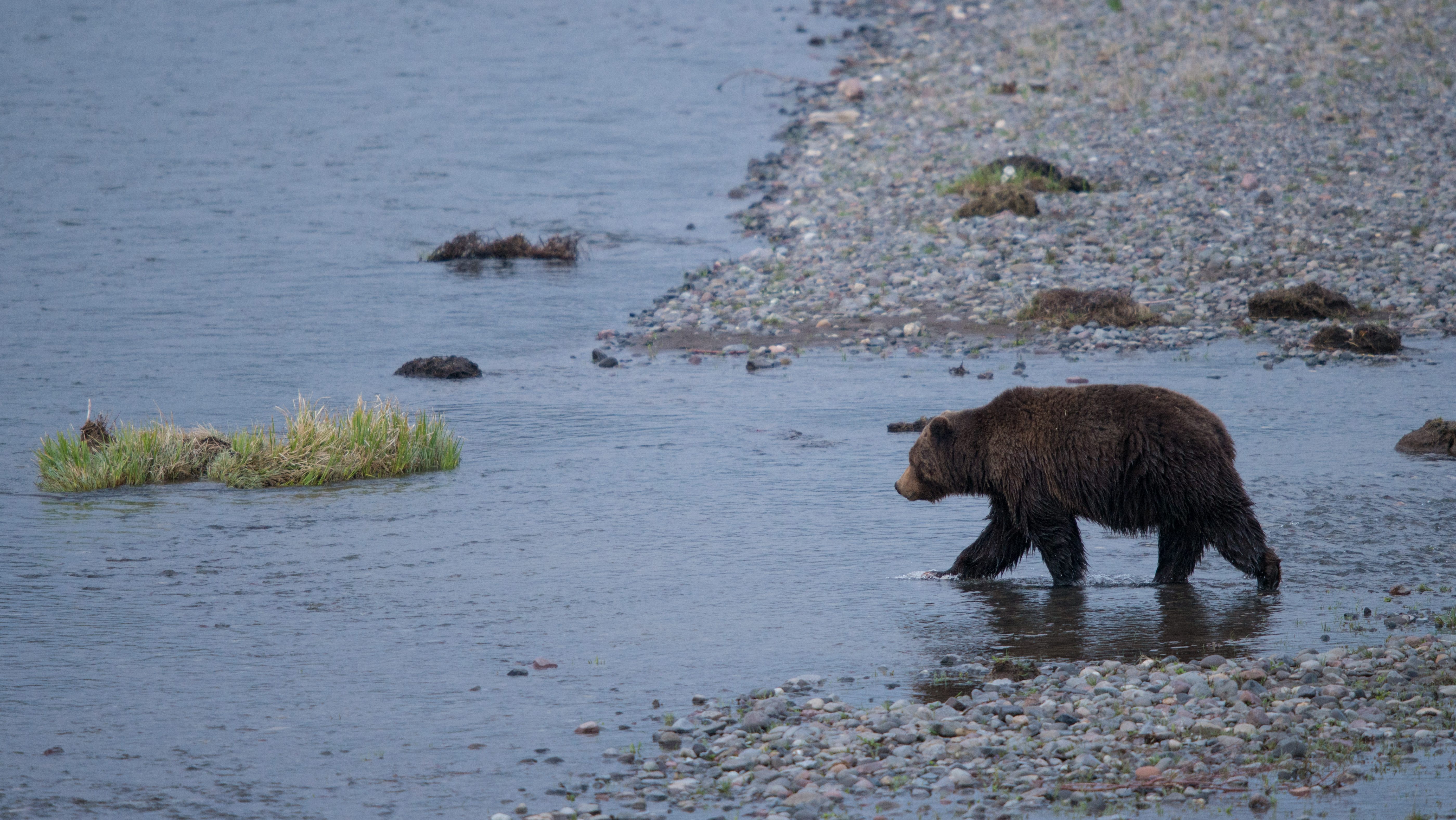
A grizzly in Yellowstone. © Scott Copeland The Yellowstone River flows through some of the park’s most impressive scenery, including the photogenic Grand Canyon of the Yellowstone. It’s also home to one of the most beautiful fish in the country, the Yellowstone cutthroat trout (the name derives from a bright red slash below its mouth that indeed looks like a “cut throat”).
Cutthroats migrate out of Yellowstone Lake to the river to spawn. This once made the river one of the great fly fishing destinations in the world. Those fish also provided a calorie-rich buffet line for grizzly bears, river otters, ospreys, bald eagles and many other species.
That changed dramatically thirty years ago, when someone illegally dumped lake trout, a non-native species, in Lake Yellowstone – a mindless act of ecological vandalism. The cutthroat populations crashed – some estimates say by 99 percent.
Today, efforts are underway to use commercial fishing nets to remove the voracious lake trout from the lake. It may hold the best promise for restoring Yellowstone cutts.
And you can still enjoy natural spectacle along the Yellowstone: the Hayden Valley is a spectacular place to see grizzly bears and other wildlife.
To see and photograph a Yellowstone cutthroat run up close, head to Trout Lake, where in early summer the trout run up a tiny stream to spawn. They sometimes attract hungry river otters who will gnaw on trout just feet away from visitors – a stunning photographic opportunity.
-
Tower-Roosevelt
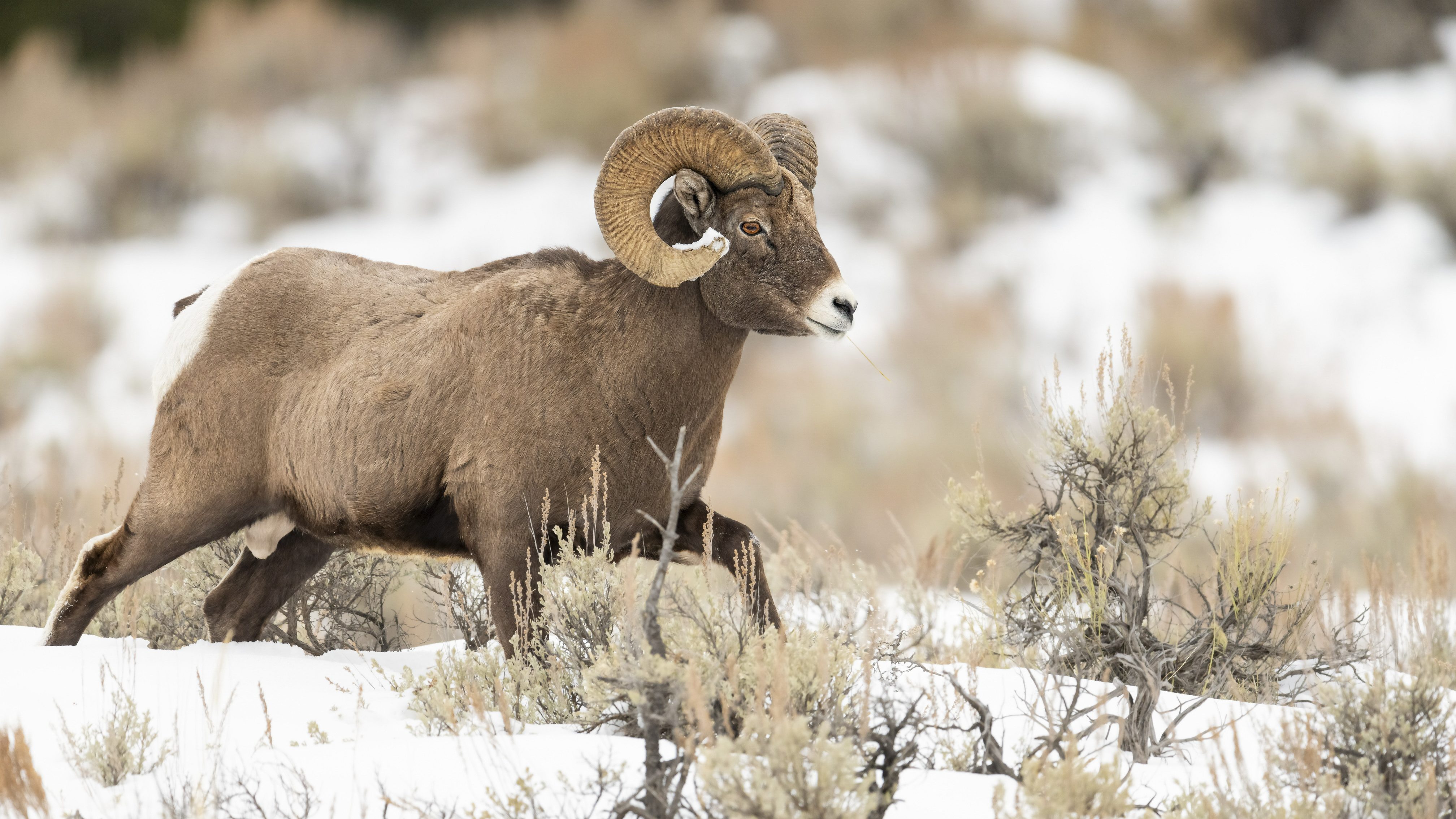
A bighorn sheep. © David Glatz /TNC Photo Contest 2019 The imposing cliffs in the Tower area are a great place to see bighorn sheep in action. Impossibly steep rock faces pose no problem to bighorns, who use the terrain to avoid and evade predators.
You can sometimes see bighorns outlined on the canyon walls in this area. But if you don’t see any, carefully scan the rocky cliff faces. Oftentimes, a bighorn or two is hanging out on a rocky ledge. You’ll find yourself wondering how they ever got there in the first place.
Watch closely and you might catch some the bighorns scampering over their rocky home. Or better: one time I was able to watch a bighorn ewe give birth to a lamb. She licked it off as it made its first attempt to stand.
-
Geyser Basins
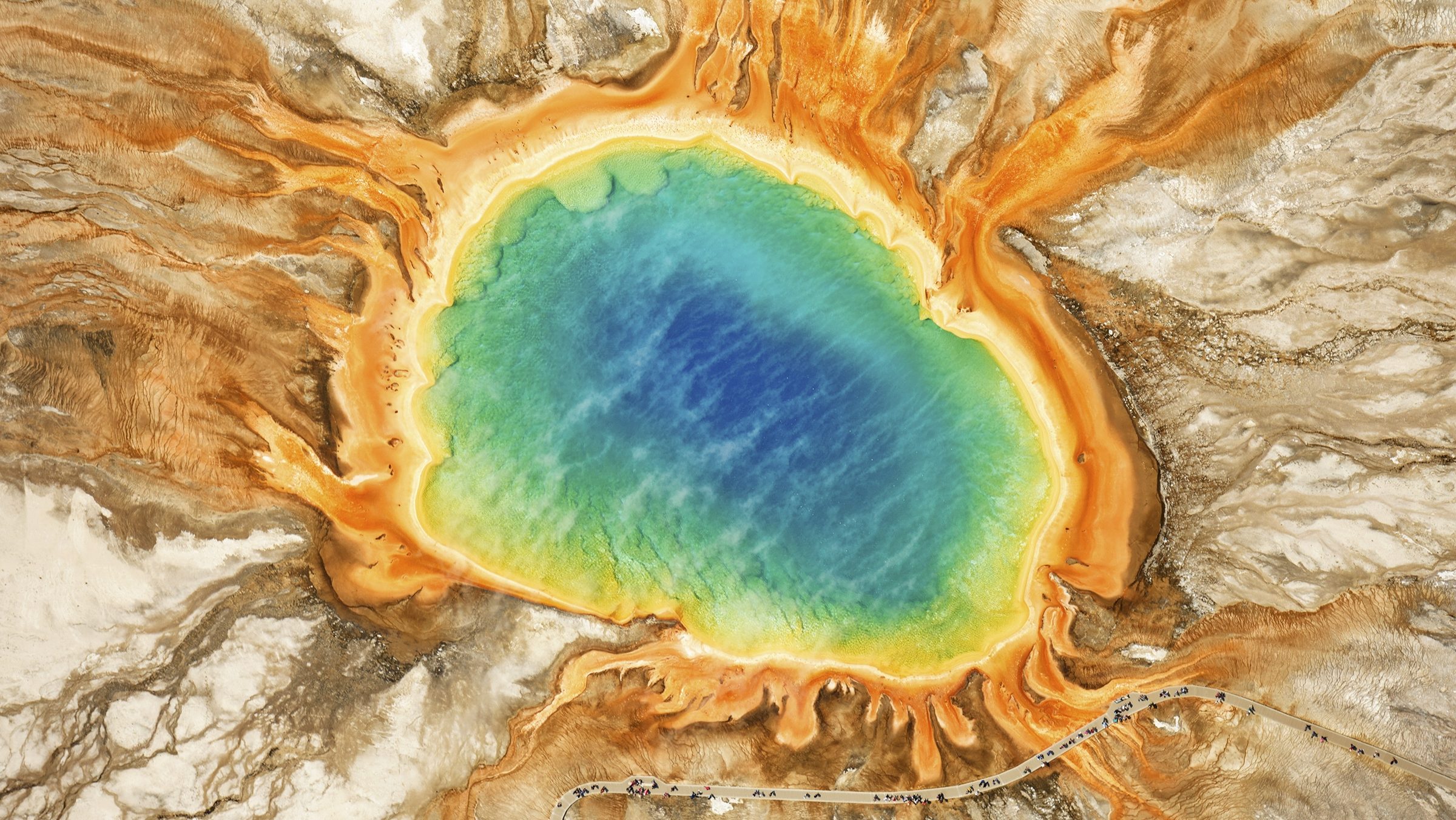
Yellowstone’s grand prismatic spring. © Jassen Todorov /TNC Photo Contest 2018 Yellowstone has arguably the greatest array of geothermal features, with 10,000 geysers, mud pots, fumaroles and hot springs. These might seem like unlikely places to look for wildlife. And indeed, most scientists always assumed that hot water, sulfuric acid and other extreme conditions were far too hostile to support life.
In 1966, Dr. Thomas Brock discovered an organism, Thermus aquaticus, in Yellowstone’s hot springs. Since then, the geothermal features have been found to have a rich array of bacteria and archaea, as well as algae, protozoa and fungi. Indeed, the biodiversity found in and around geothermal features far exceeds what you’ll see in the Lamar Valley.
These “extremophiles” are adapted to live in conditions like near-boiling water, high alkalinity and high acidity. Many scientists believe they may be similar to the first living organisms on earth. These microbes may also hold important keys for medicine and energy production.
I’ll not suggest that seeing a microbe is the same as seeing a grizzly bear, but the cyanobacterial mats and other colorful, living formations are well worth photographing. And the National Park Service has done a great job of providing interpretive materials so you know what you’re seeing.
-
Flat Ranch Preserve
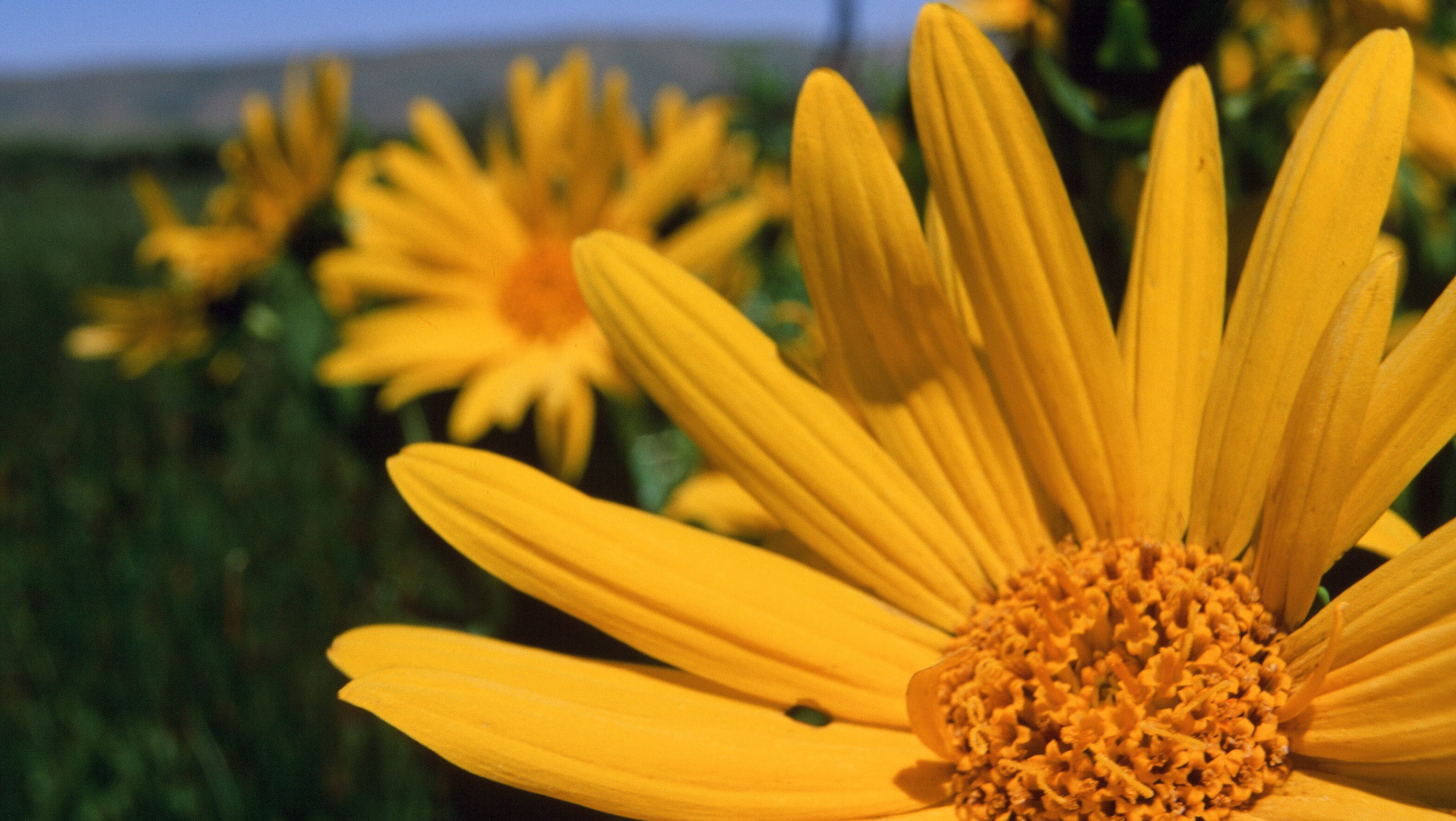
Mule’s ear flowers at Flat Ranch Preserve. © Edward Orth The Nature Conservancy’s Flat Ranch is a nature preserve and working cattle ranch located 15 miles west of West Yellowstone, in Macks Inn, Idaho, just off Highway 20. True, it’s not in the park. But Yellowstone’s wildlife does not recognize park boundaries, which were established to protect scenery and geology more than wild animals.
The land surrounding the park – called by conservationists the Greater Yellowstone Area – is vitally important for animals that migrate outside the park to escape harsh winter conditions. Many times wildlife species migrate through working ranches, which is why the Conservancy is working to protect these areas from development.
Flat Ranch Preserve illustrates the importance of protecting these corridors. Pronghorn, moose, elk and even grizzly bears often move through the property. For naturalists, it’s also one of the best places in the region to go birding: the preserve has one of the largest nesting populations of long-billed curlews in the country and many grassland species can often be spotted.
Preserve volunteers will usually have a spotting scope set up so visitors can see sandhill cranes and pronghorns. Since a restoration project three years ago, the fishing for rainbow trout and native Yellowstone cutthroat trout is excellent. There are educational talks on most Wednesdays and Saturdays throughout the summer.
And then there are the flowers: spectacular blooms of mule’s ear and others paint the “flats” a rich palette of colors.
Yellowstone is a spectacular park, and seeing herds of bison, bears and wolves, huge bull elk and other wildlife gives the idea that this place is perfectly protected. But these critters need room to roam. Stop by the Flat Ranch and see for yourself the importance of keeping working lands working — and learn how you can help protect the entire Yellowstone area for future generations to enjoy.
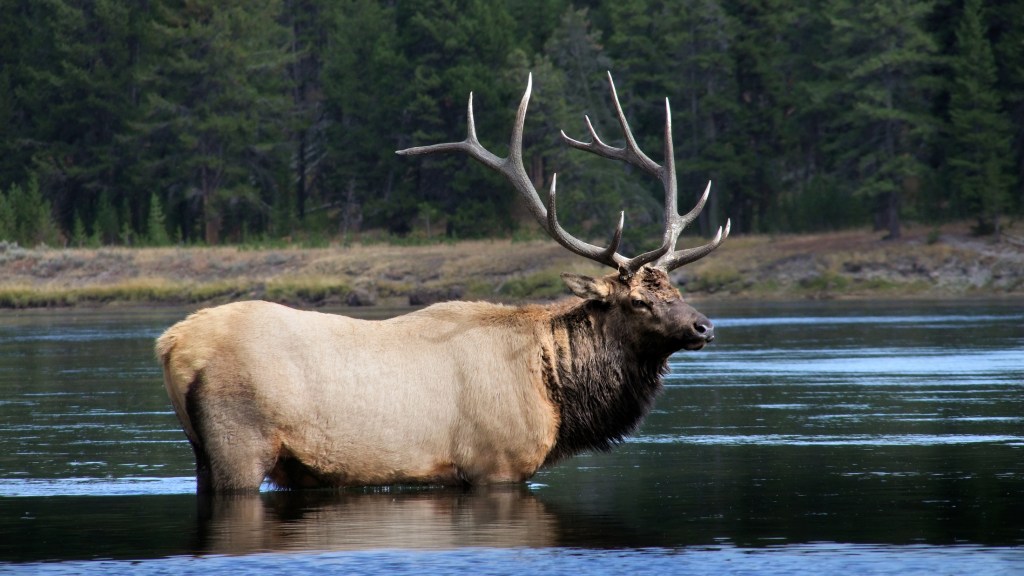



Where in Yellowstone in the winter is the best wildlife viewing
RE: James Douglas Sangster comment on the grizzly photo.
I thought the same thing, that it was a black, not a grizzly, and have shown the article/photo to several hunters, naturalists, and just plain animal watchers who live everywhere from Colorado to Alaska. Everyone of those folks thinks it’s a black.
But hardly a scratch on the years of excellent work by Matt!
Thanks –
Rebecca K
Ridgway CO
I have been twice to Yellowstone. I have never seen a Yellowstone Grizzley Bear. I am reading that they will be delisted and will be there for the shooting. I hope I am wrong and maybe a I will see one next time I visit.
From what I am reading about Western State governor having open warfare on the wolf I am concern also about Yellowstone wolves
It was great to read that Montana Governor has stopped shooting all of Yellowstone Bison that go into National Forests in the winter to find food. There is hope the Bison herds will grow again to the size they were before the Montana cattleman convinced their Governor to began killing the thousands plus he did.
Matt
I just now found your article, Aug2016, even though it’s been out for some 3 years. I have one minor suggestion. I’d replace the “grizzly” picture with a more definitive photo. The “dished” face and rounded ears are not clearly depicted by your picture. My first reaction was that the picture is of a black bear. After comparing my pictures with yours, I’m at about 65% “certain” that you “captured” a black bear.
I tried (and failed) to identify the exact individual in your photo. Actually, the closest match was to a large male who was watching the dentist work on me in Bozeman 2 yrs ago this September. (Who was in the zoo?)
Thanks for your work
Doug
I am planning a trip to ynp and grand Tetons next July with my family. I am figuring 14 day tour. Love all wildlife, but Bears are my passion. We fought and won a years reprieve for our Florida Black Bears. No Bear Hunt in 2016! Are there hidden areas that only locals know about that are a must see? With 2 days traveling into the area and out. We will have 10 days to explore. I have been looking at Airbnb site for rentals but not sure if we stayed near West Entrance for 1 week and 1 week elsewhere, would this give us the right proximity to see the area? And where should the second week stay be, to take in as much wildlife and scenery? Or should we plan to move more often? There will be 7 of us in a group.
We are taking a trip to yellowstone and was wondering where the best place to stay would be to see wildlife?
what a perect blog thank you for that . I hope more people read it
Matt,
Can you explain to me the reason the bison calf was euthanized after the Canadian tourist put him in his SUV? I don’t understand why he was not places in a zoo or reserve.
Thank you.
Linda Wolpert
Please respond at lindalakes@comcast.net
I am curious and disappointed that as a wildlife/habitat preservation group, instead of returning bison to their natural home, The Nature Conservancy is running cattle ranch at its Flat Ranch Preserve near Macs Inn. Cows are EVERYWHERE in Idaho, Wyoming and Montana, where as, bison are relegated to the boundaries of Yellowstone. The Nature Conservancy should lead the way in returning bison to the Flat Ranch Preserve and their other preserved in the Rocky Mountain region.
Joyce,
Thank you for your note, and glad you enjoyed the blog. Yellowstone is an incredible place, isn’t it? I love observing interactions like what you mentioned.
It is actually fairly common for raptors and coyotes to follow each other like you describe. The coyote might flush a small mammal that the raptor could swoop in and eat, or the raptor could flush something into the coyote.
It could be any number of raptors: a harrier or a red-tailed hawk seem like possible candidates. It was probably not an osprey as they eat fish and I’ve never observed (or read of observations) of this behavior in them. I do often see ravens following coyotes and other predators (including human hunters) to scavenge kills.
I have seen this behavior in dramatic fashion at the Snake River Birds of Prey National Conservation Area in Idaho: various predators are hunting ground squirrels, but many other raptors and ravens are hanging out waiting to swoop in and steal the ground squirrel away. I’ve seen a couple of dramatic instances of this–the ground squirrel dropped and caught by multiple species (raven, harrier, red-tailed hawk, golden eagle). Might be a topic for a future blog post….
Thanks again for writing!
Best,
Matt
Matt,
I have just discovered your travelling naturalist 5 top spots to see wildlife in Yellwostone and really enjoy it. We just returned from Yellowstone and had a wonderful experience including some wild cool wet and snowy weather for Sept.!
I have a question for you. Can you tell me what bird this is?: On the far side of the Yellowstone River south of Upper Falls and north of Sulfur Caldron we were able to watch for about 30 minutes a gorgeous, large coyote hunt in the grasses along the riverbank. It was physically and spatially associated with a large bird, maybe an osprey or a hawk (I would say they were buddies, they obviously knew and were comfortable with each other). I was not close enough to see markings on the bird, even with my binoculars. The bird was on the ground a fair amount of time and flew in the air, not high, just enough to stay close to the coyote. Any idea what the bird was? We saw injured, stay-at-home birds at the Buffalo Bill Center in Cody, some with damaged wings – this bird may not have been able to fly because it had a problem and was getting its food from Coyote leftovers – I don’t know; the coyote did not mind the birds presence at all – it was actually quite friendly to the bird which I found interesting since maybe a coyote would eat a bird it found dead or mostly dead on the gound? This large bird seemed in pretty good shape; it just did not fly up high or away. It was comfortable on the ground and staying very close to the coyote – wouldn’t this be unusual behavior? Or do one of the large birds of prey do stuff like this? Again, I thought maybe an osprey, a hawk, m a y b e a northern harrier??
Thank you.
Joyce Trygstad Nelson
Evergreen, Colorado
Thanks for the comment and bighorn watching suggestion. I have seen bighorn rams right along the road near Quake Lake as well. The Big Sky area is great for wildlife viewing, and is also important for wildlife migration and movement.
Big Sky Montana, located one hour north of the west entrance into Yellowstone National Park, is also a great place to see big horns. They like to hang out on the road right next to the Visitor Center. Yesterday there was a huge ram there!
Not in the park, but defiantly very close.